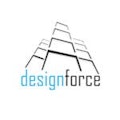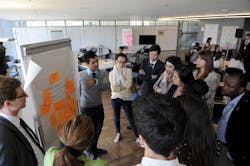Millennials: 3 ways to position yourself as an emerging design professional
A year ago, we Millennials (I’m 33) surpassed the Baby Boomers as the largest living generation, according to the Census Bureau. Millennials are poised to dominate the U.S. workforce.
Now that you’re ready to take over the design industry, what’s your first step? You’re sick of detailing stairwells. Time after time, as you have sought greater responsibility and professional opportunity, you’ve been rebuffed with these frustrating words: “Thanks, but we’re really looking for someone with more experience.” But how do you get that experience?
As one who has been advising our generation of design professionals about career development for more than a decade, I’d like to offer three steps you can take right now in your current position to prepare yourself for an expanded professional role in the future.
1. BROADEN YOUR EXPERIENCE HORIZONS
Having experience in various phases of a project—SD, DD, CD, CA—as well as taking on different roles—sustainability consultant, project manager, client relations, etc.—will enable you to become more qualified for more enriched opportunities.
A crucial step in your career as a designer is to be able to complete a project from start to finish—to realize the full process on your own. Once you start working on projects more independently you will open yourself up for more responsible—and professionally rewarding—project roles.
2. UPDATE YOUR PROFESSIONAL MATERIALS
Your portfolio should be a living document of your professional experiences. It should be a lens into the types of projects you have worked on and your specific roles and responsibilities in them. Don’t embellish your experience and qualifications. That will only work against you in the long run. Just let the facts speak for themselves.
Be sure to include sheets of a CD set that you have worked on, or get the professionally completed images of the space. Specify exactly how you contributed to each project you worked on.
3. SEEK MENTORS—LOTS OF THEM
The whole concept of mentorship has changed, especially for the Millennial generation. Mentorship is no longer a formal selection process of having a single mentor to support you at your firm. It has transformed into a community of individuals that you must “curate” throughout your career to guide you through your professional development.
This will take effort on your part. Start by asking someone you respect to coffee to get advice on a specific topic or dilemma. Identify the specific components of your career where you want more exposure. Maybe it’s taking on more of a business development role, or building broker relations, or getting involved in an industry association.
Set goals for yourself and tie them to your mentorship goals. If you’re hoping to get more involved in, say, CREW (Commercial Real Estate Women Network), research if anyone from your firm—or an outside firm—is already involved and reach out to her. People like to help recruit new members to service organizations.
Identifying what is important to you and aligning yourself with colleagues and mentors who can help you reach these goals is paramount to your professional growth.
About the Author

Design Force
Design Force is a specialty Professional Placement Firm that provides high-touch recruitment services exclusively to the Design and Construction industry. Based in Washington, D.C., Design Force has more than 12 years’ experience helping highly qualified AEC professionals across the U.S. fulfill their career goals. We provide premium career development support that embodies the highest standards of professionalism, discretion, and confidentiality. All of our highly trained, tenured staff of hiring managers have experience as professionals in the AEC industry. Design Force works with a select group of AEC client firms across the U.S. who are looking to hire highly motivated design and construction professionals. The Managing Principal of Design Force is Ahmed Kurtom, a professional engineer.
